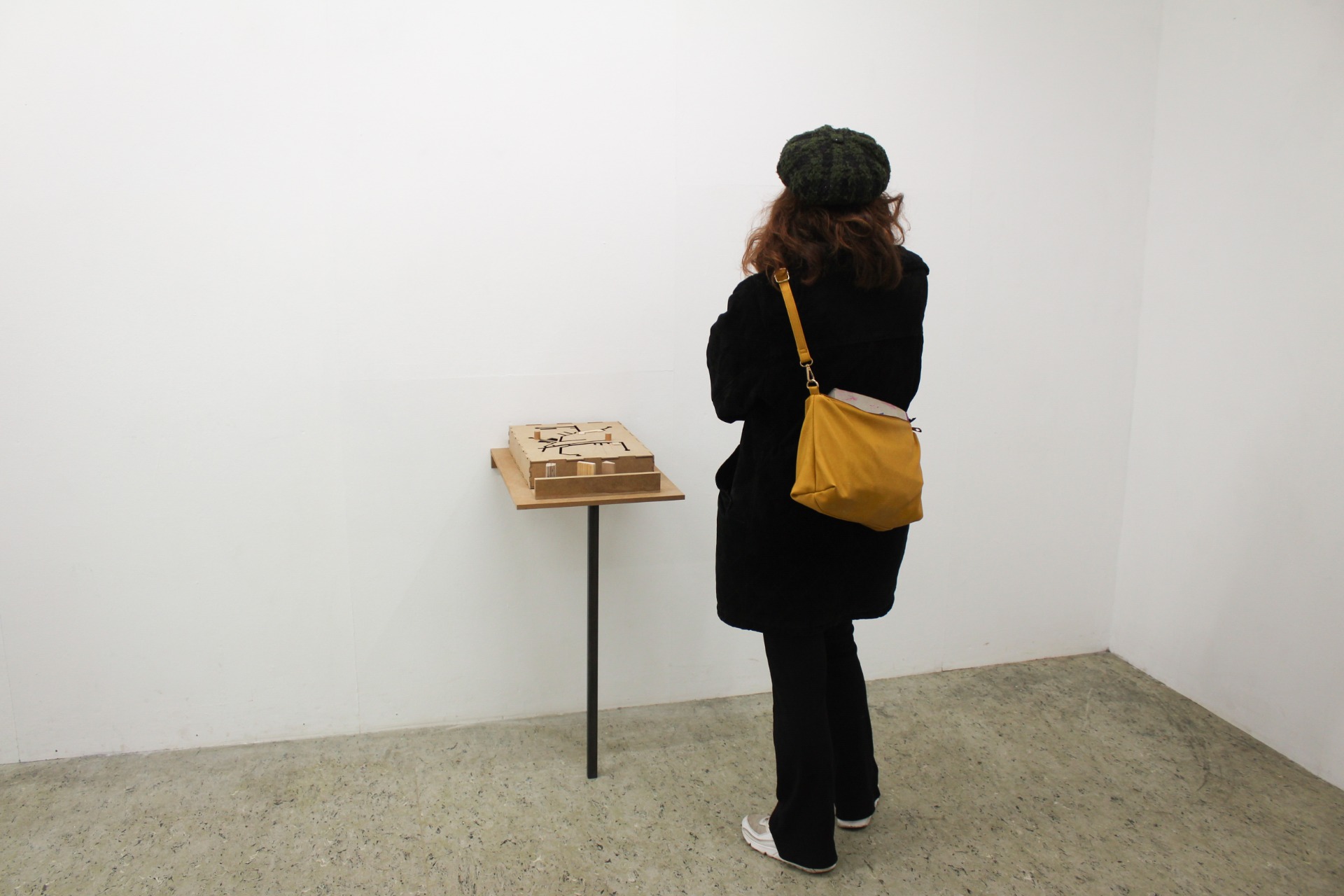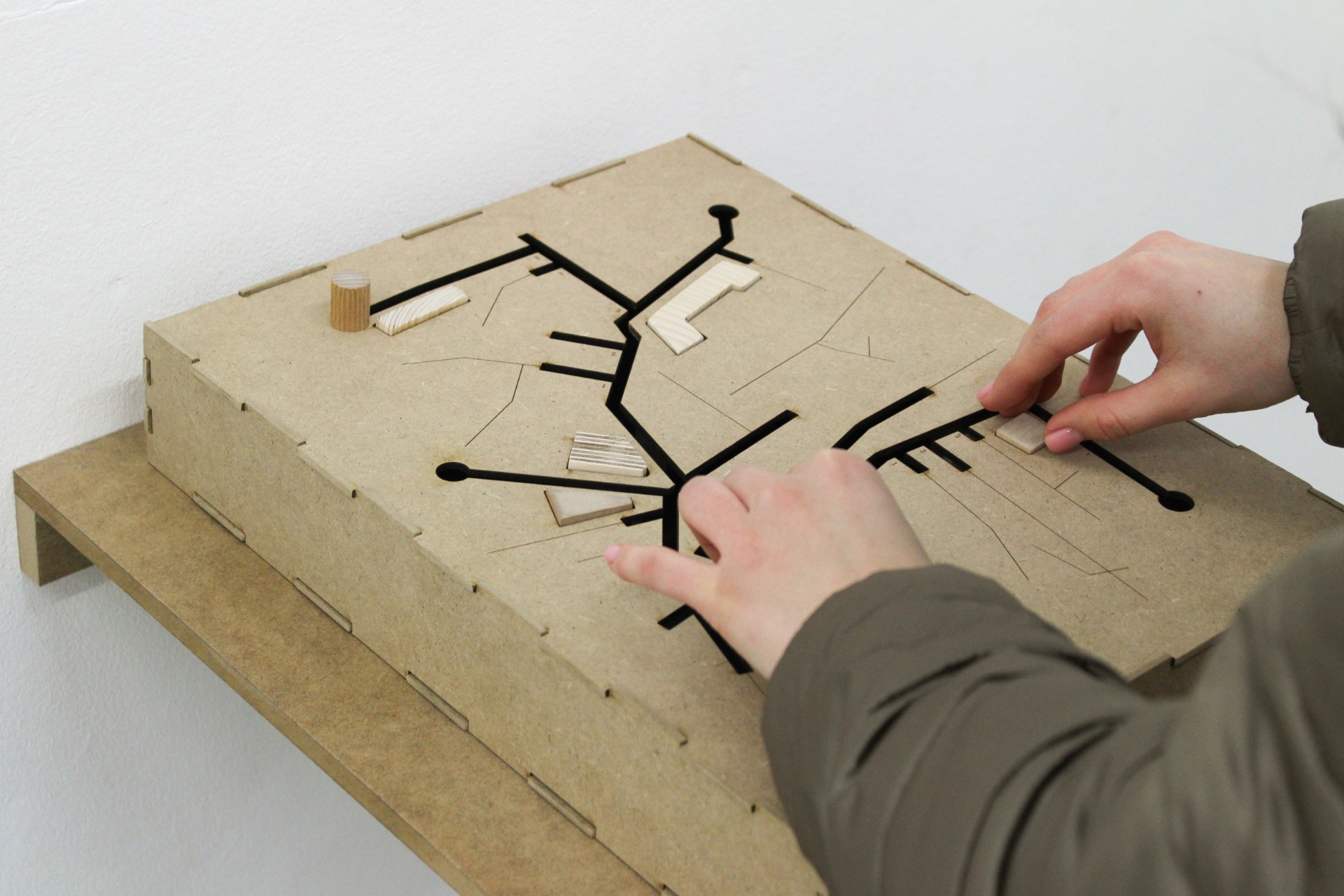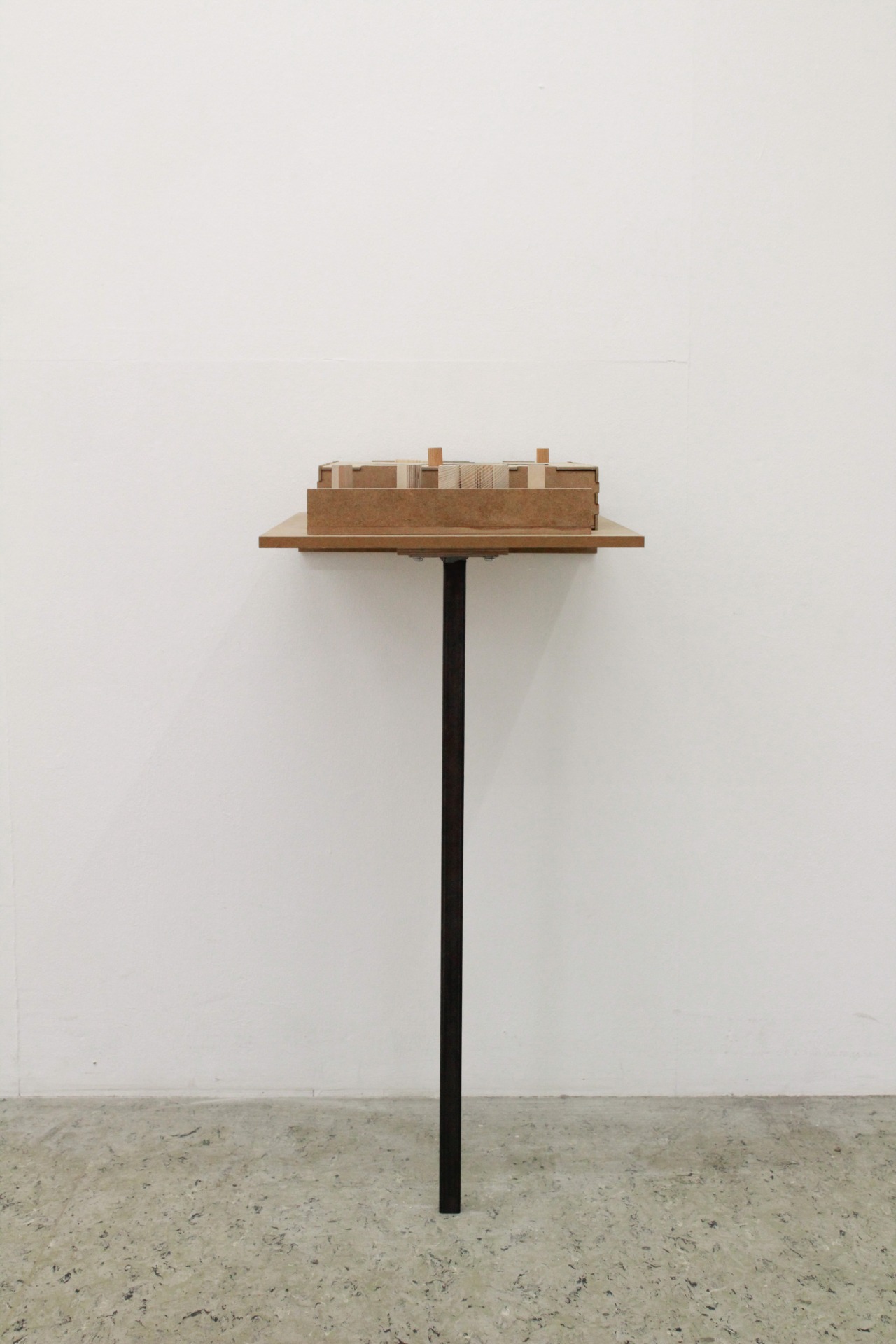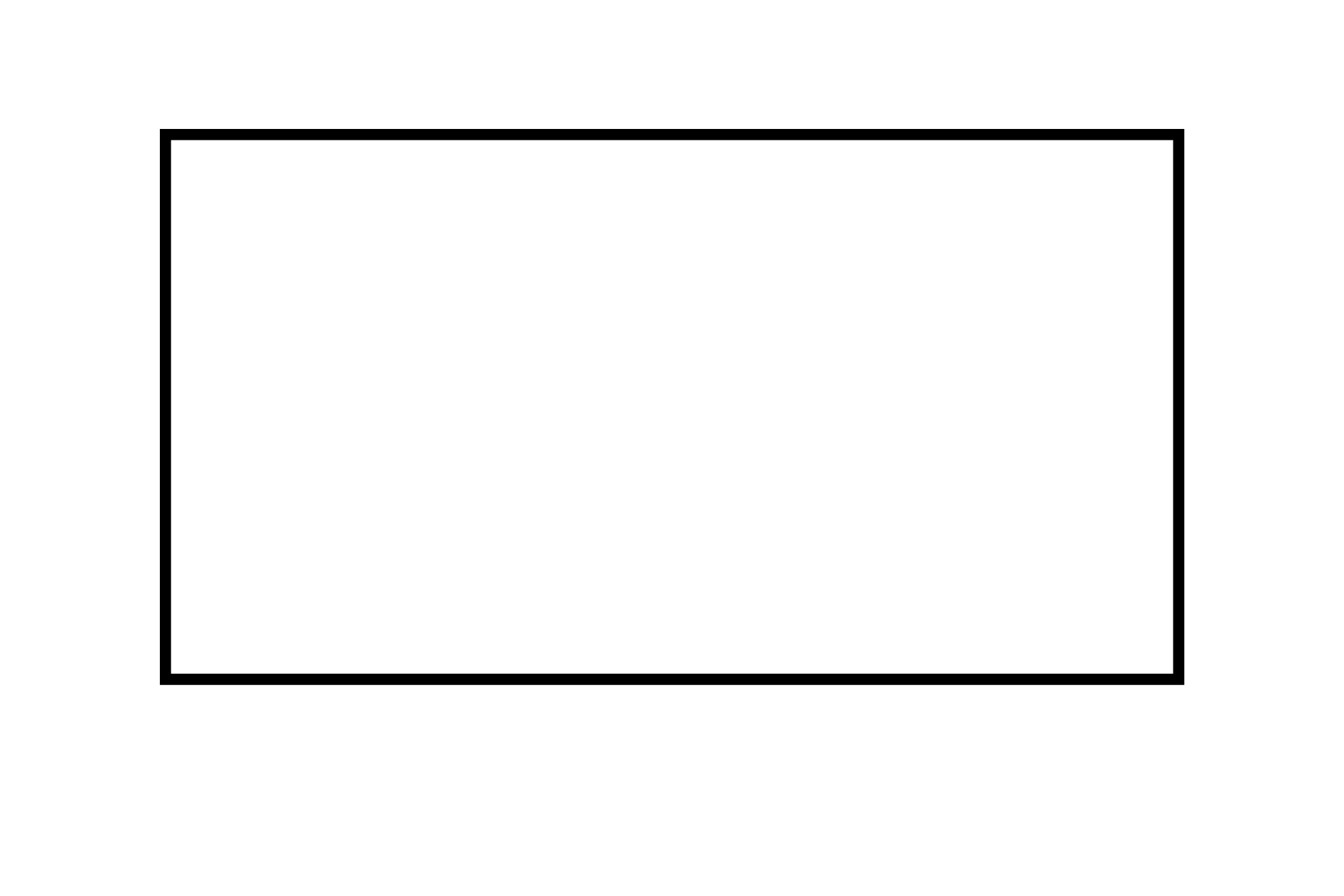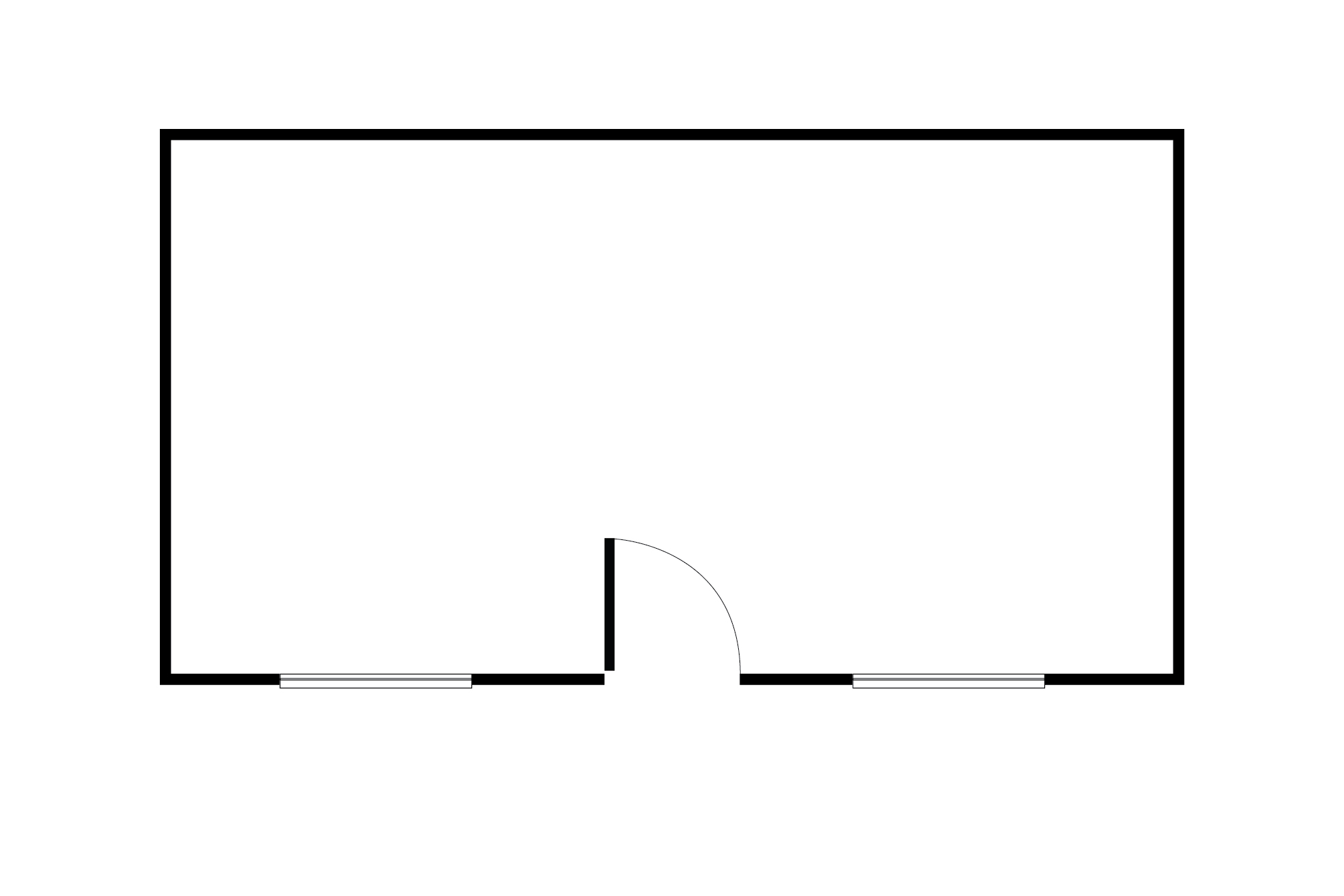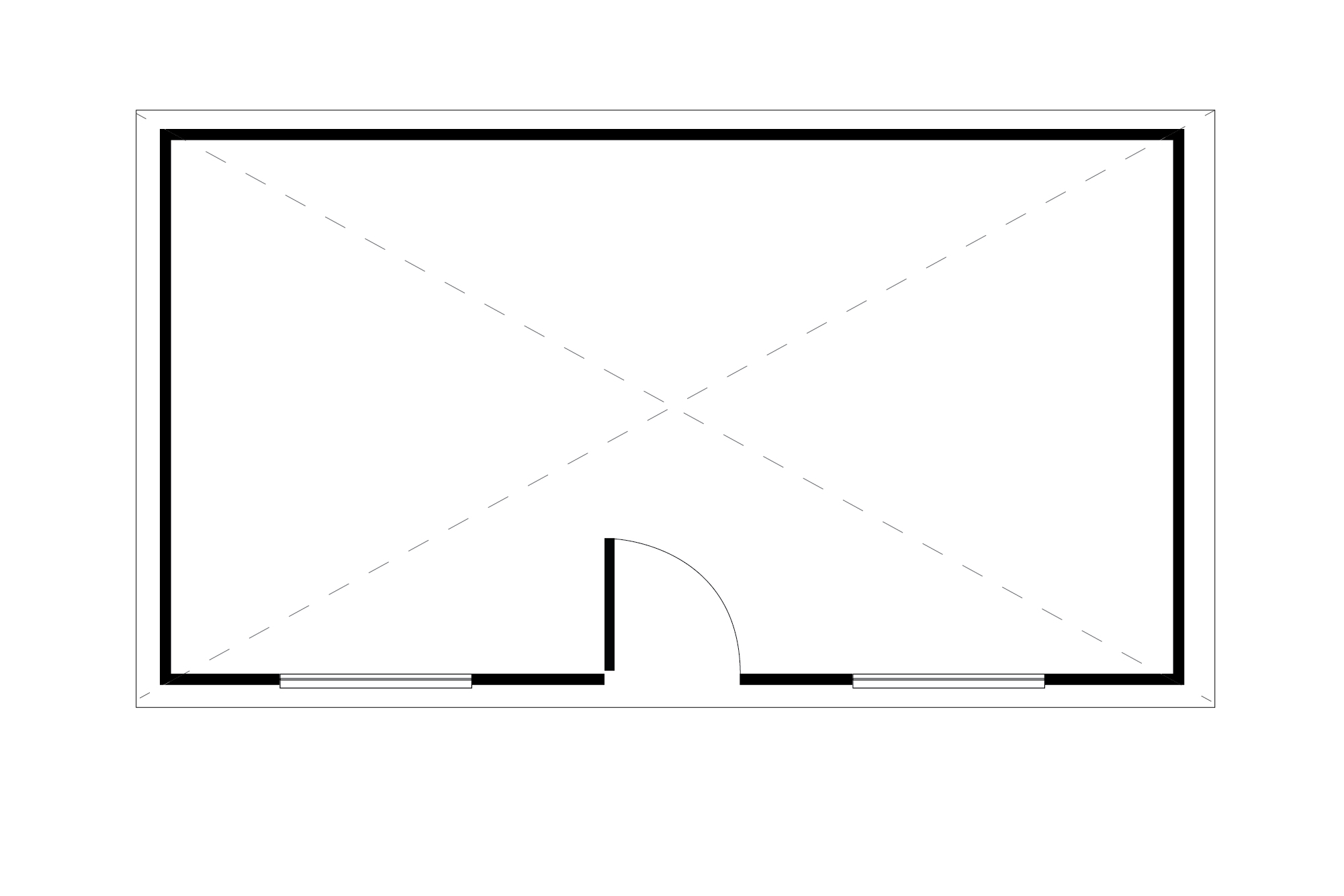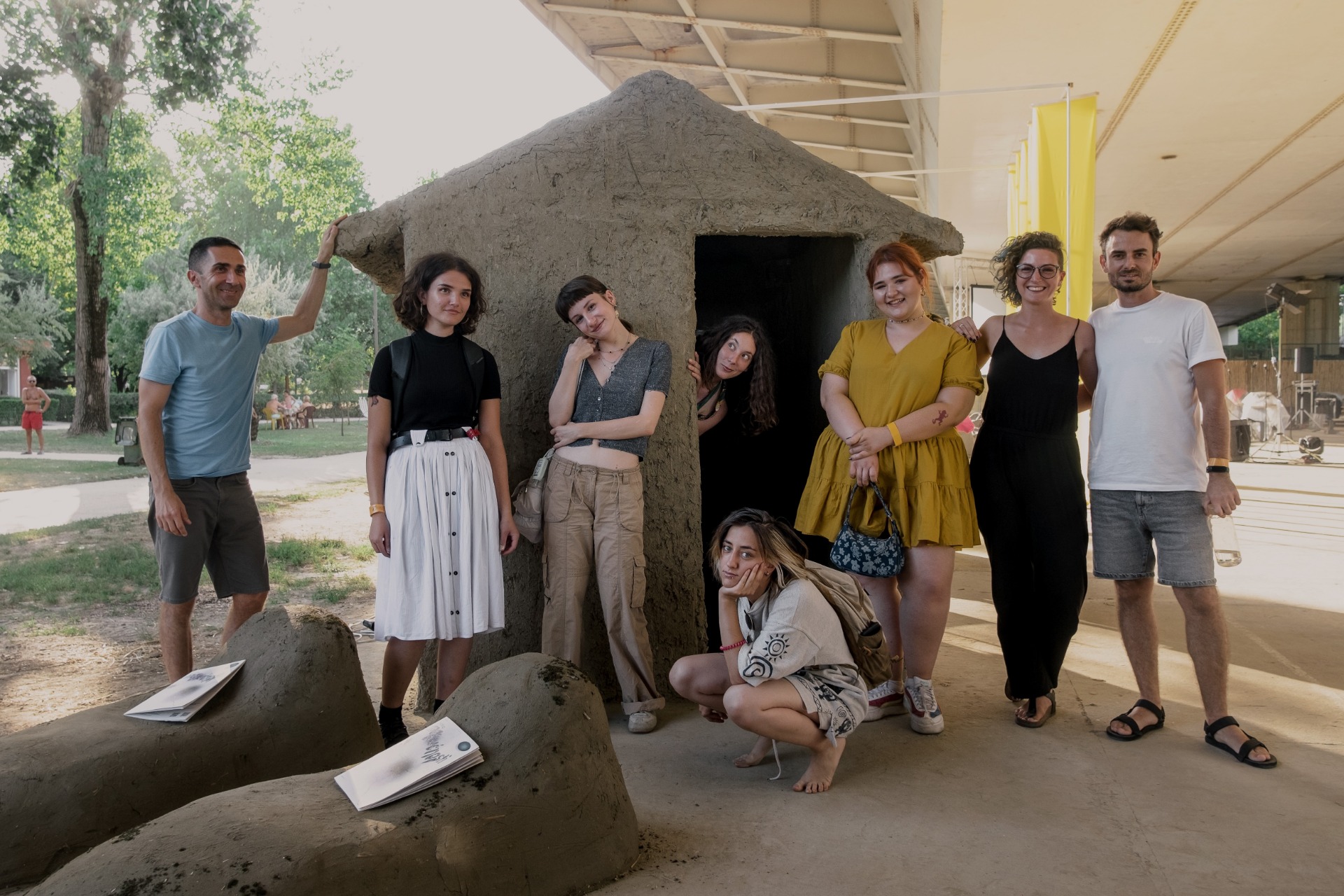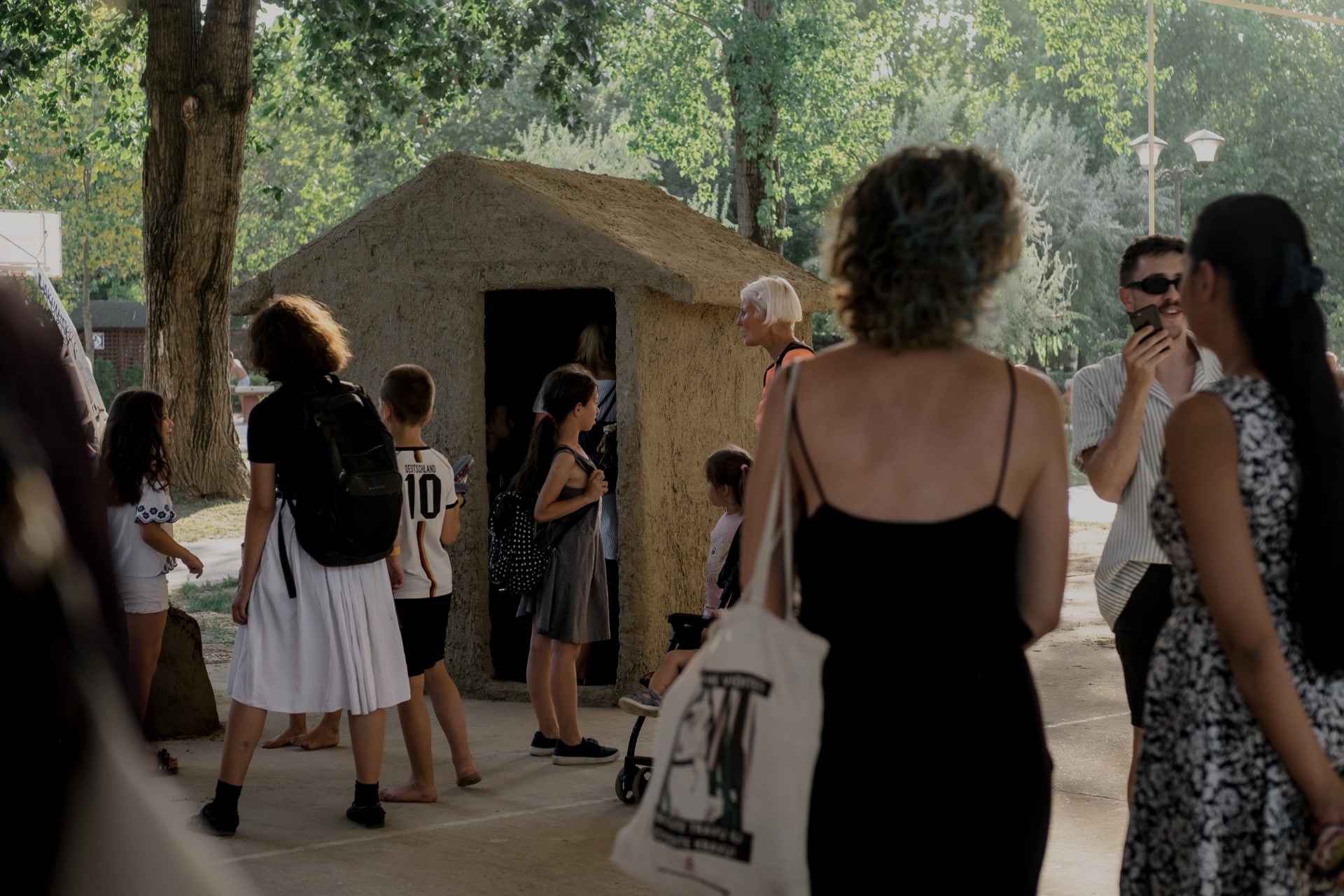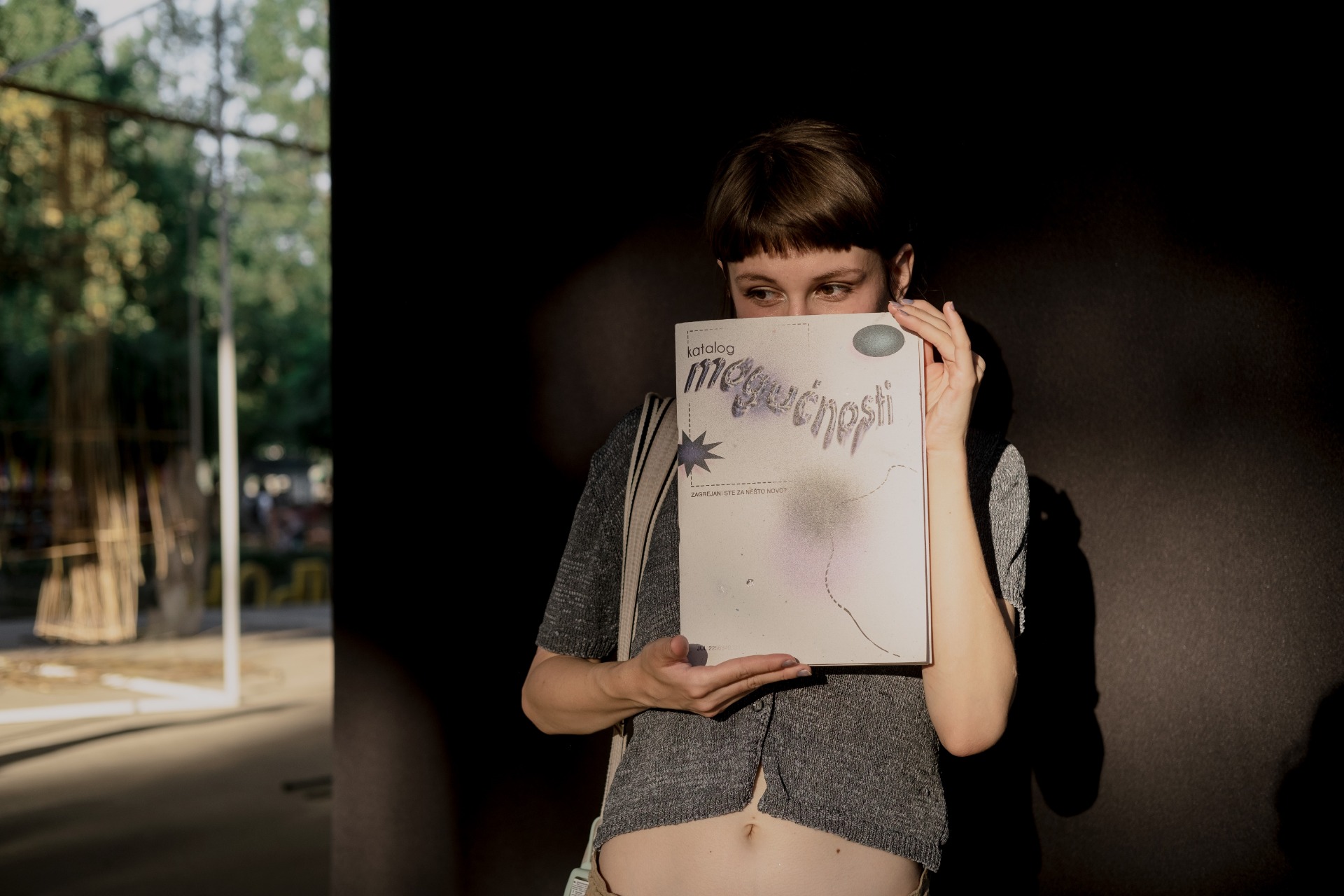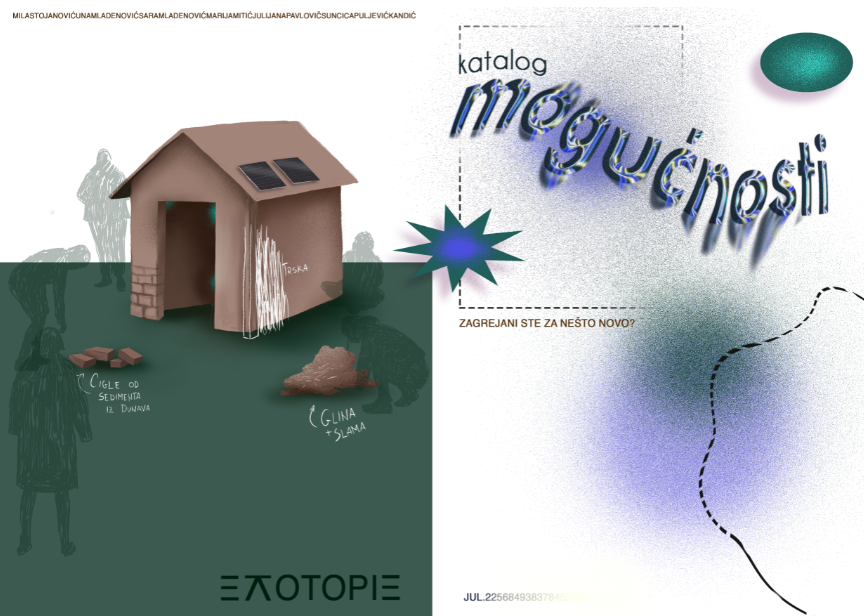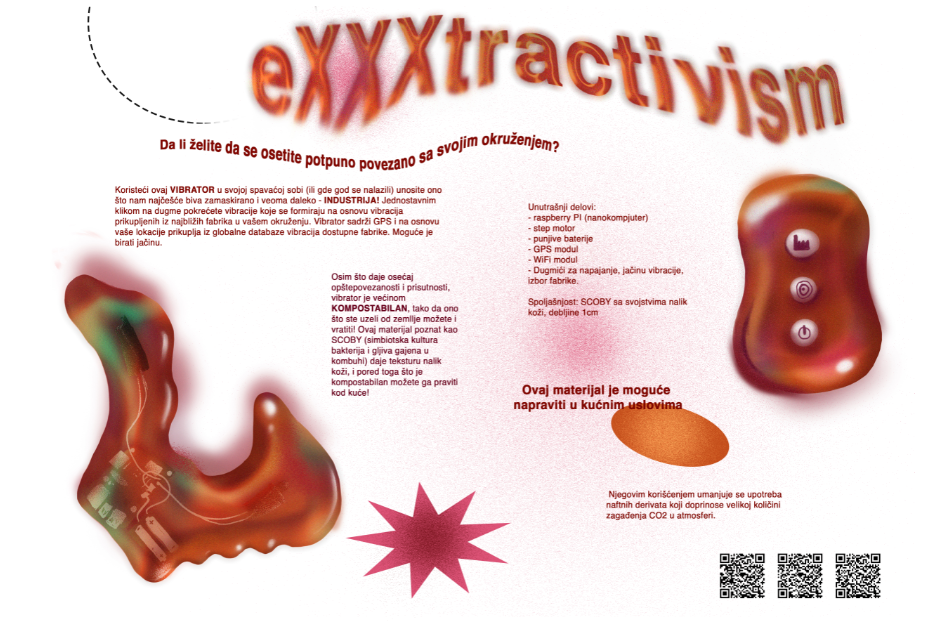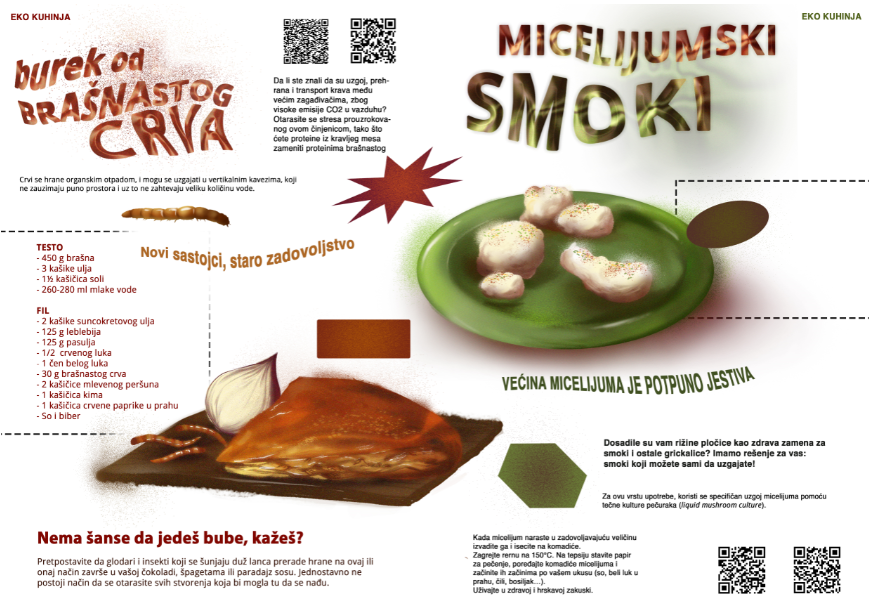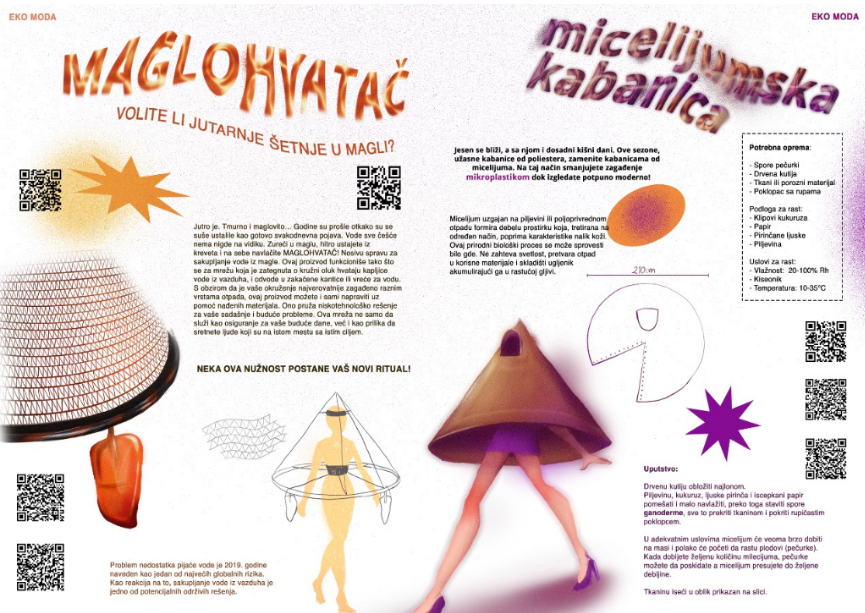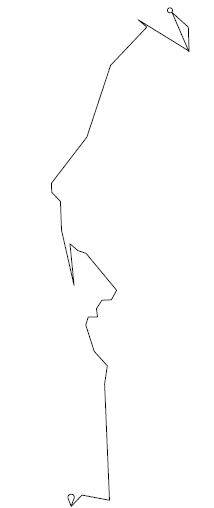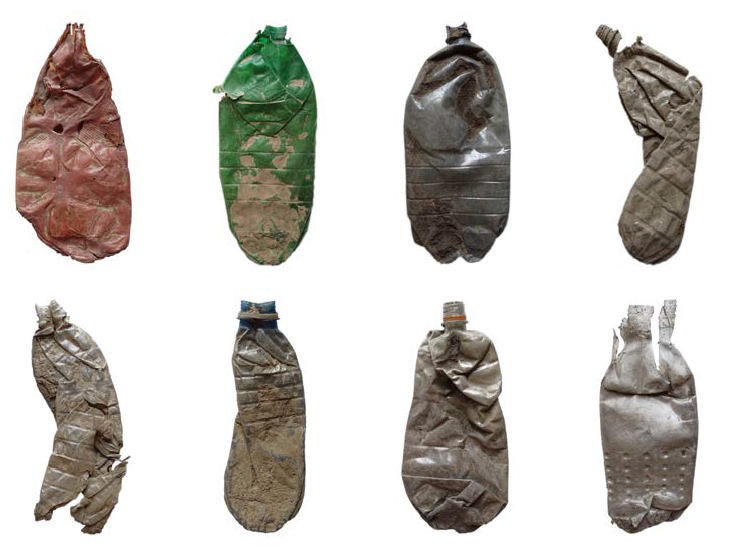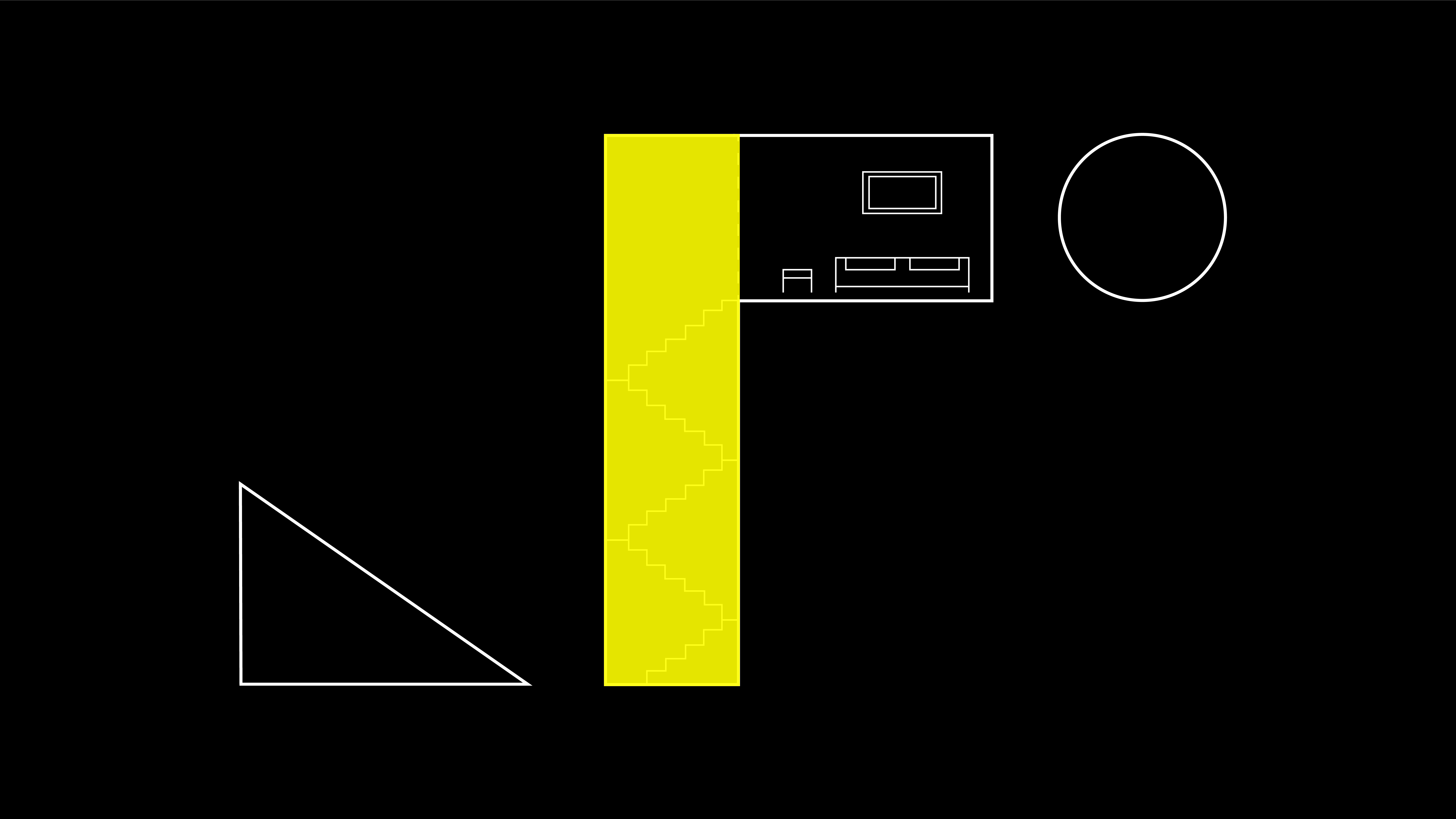
From point to point:
a
line, a shape, a number
What does the experience of navigating through unfamiliar urban landscapes look like when influenced by 2D navigation tools such as digital or paper maps? It potentially becomes a game of association, a constant translation from 2D to 3D and vice versa, a search for correlation between what is symbolized in the map and the reality of our surroundings. A reality perceived through an abstract lens, where a building could be just a geometrical body, a road could be just a line and you could be just a dot.
In which ways can cartographic language be read if the place being represented on the map is non existent?
